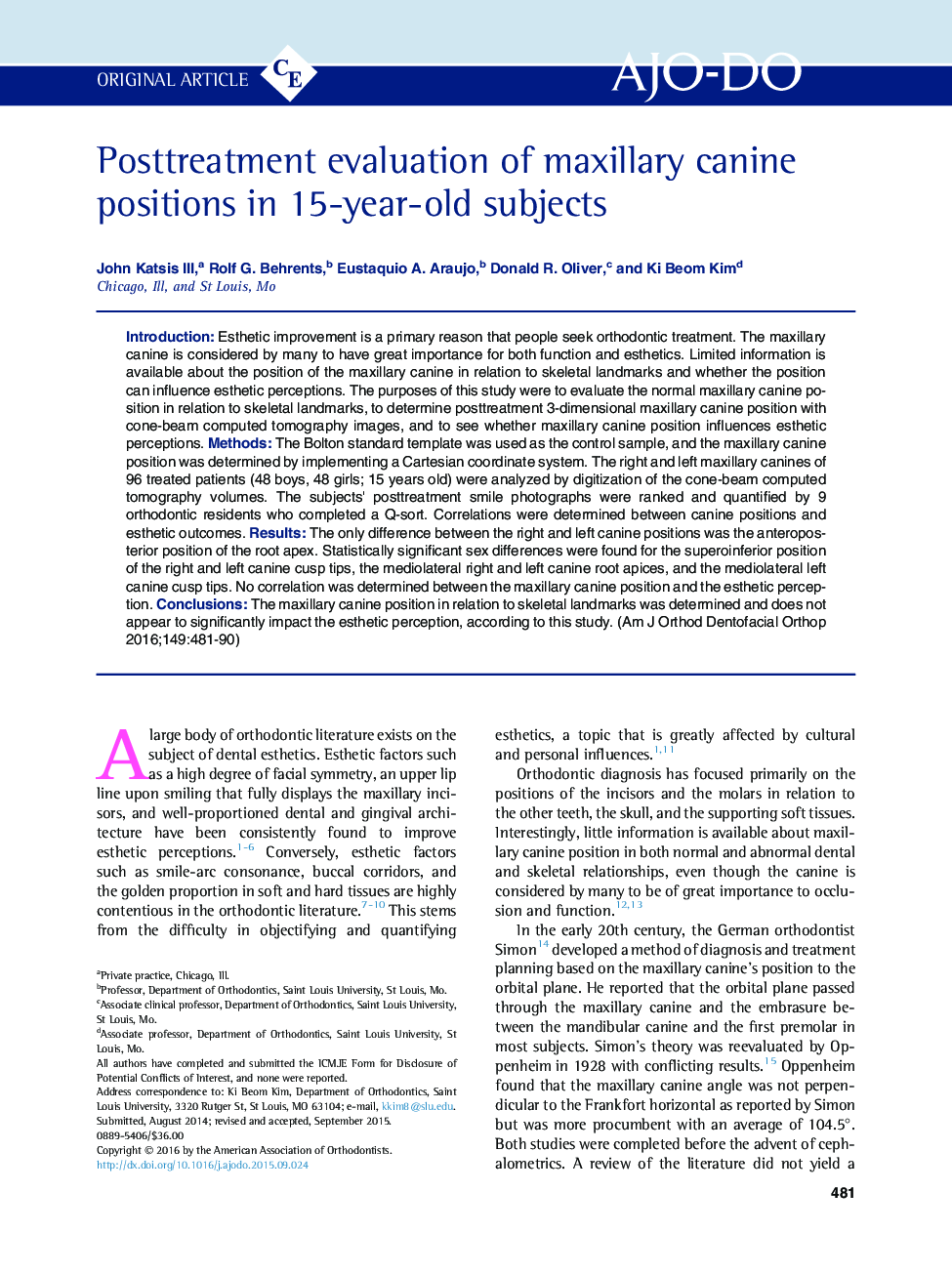| Article ID | Journal | Published Year | Pages | File Type |
|---|---|---|---|---|
| 3115479 | American Journal of Orthodontics and Dentofacial Orthopedics | 2016 | 10 Pages |
•Posttreatment maxillary canine positions differed between the left and right anteroposterior apices.•Significant sex differences were found.•No correlations were found between the best and worst esthetic outcomes and canine positions.
IntroductionEsthetic improvement is a primary reason that people seek orthodontic treatment. The maxillary canine is considered by many to have great importance for both function and esthetics. Limited information is available about the position of the maxillary canine in relation to skeletal landmarks and whether the position can influence esthetic perceptions. The purposes of this study were to evaluate the normal maxillary canine position in relation to skeletal landmarks, to determine posttreatment 3-dimensional maxillary canine position with cone-beam computed tomography images, and to see whether maxillary canine position influences esthetic perceptions.MethodsThe Bolton standard template was used as the control sample, and the maxillary canine position was determined by implementing a Cartesian coordinate system. The right and left maxillary canines of 96 treated patients (48 boys, 48 girls; 15 years old) were analyzed by digitization of the cone-beam computed tomography volumes. The subjects' posttreatment smile photographs were ranked and quantified by 9 orthodontic residents who completed a Q-sort. Correlations were determined between canine positions and esthetic outcomes.ResultsThe only difference between the right and left canine positions was the anteroposterior position of the root apex. Statistically significant sex differences were found for the superoinferior position of the right and left canine cusp tips, the mediolateral right and left canine root apices, and the mediolateral left canine cusp tips. No correlation was determined between the maxillary canine position and the esthetic perception.ConclusionsThe maxillary canine position in relation to skeletal landmarks was determined and does not appear to significantly impact the esthetic perception, according to this study.
